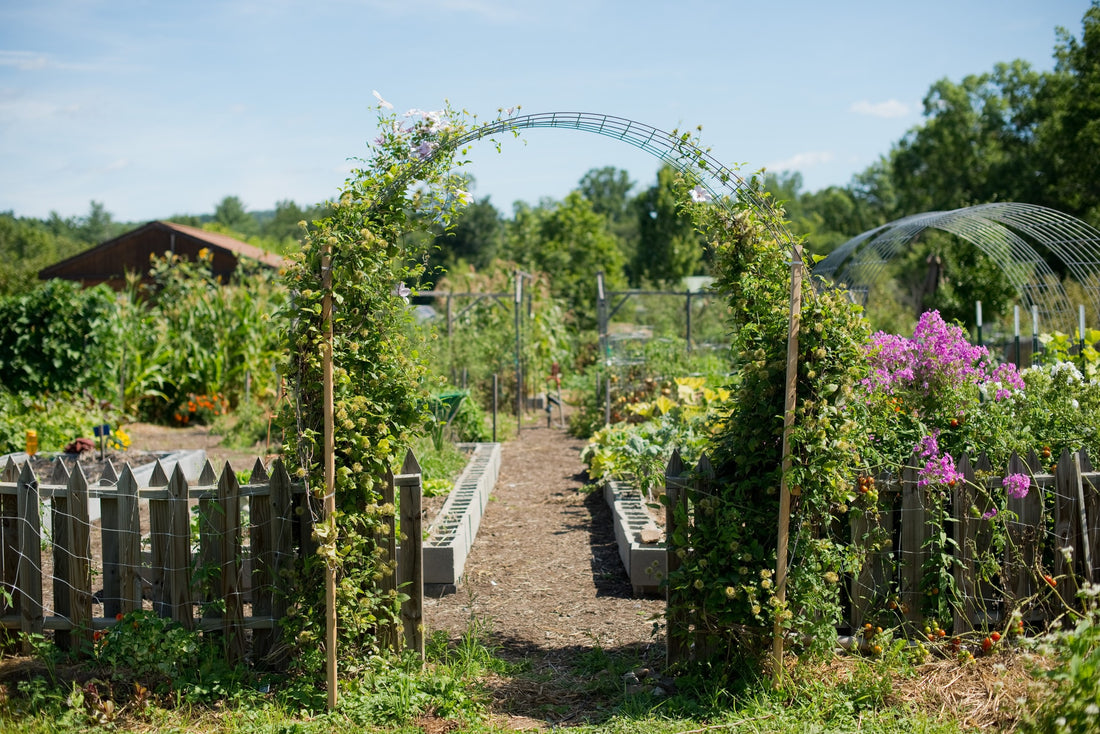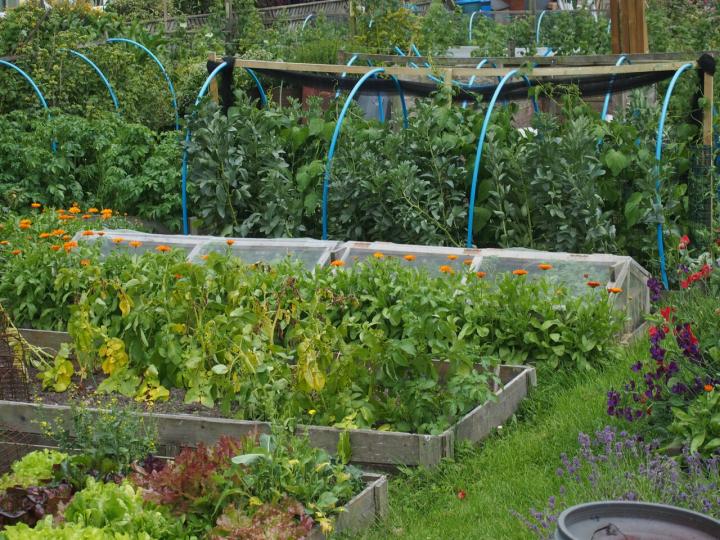What You Should Know About Homestead Gardening
What You Should Know About Homestead Gardening
Blog Article
Learn Just How to Cultivate a Flourishing Gardening Setting for All Ability Degrees
Producing a flourishing garden is a complex undertaking that can be accepted by individuals at any ability degree. By analyzing key components such as dirt health and wellness, suitable plant selection, and seasonal treatment routines, one can develop a lasting horticulture practice that generates enjoyable outcomes. Comprehending how to assess and boost your garden space lays the structure for success. The details of executing these concepts typically present difficulties that can hinder even the most passionate beginner. What approaches can be utilized to get over these challenges and cultivate a really growing atmosphere?
Recognizing Your Garden Space
In the world of horticulture, understanding your garden area is extremely important to cultivating a flourishing landscape (Homestead Gardening). The very first action in this endeavor involves examining the certain characteristics of your plot. Elements such as dirt make-up, sunlight exposure, and drain play critical duties in establishing the suitability of your garden for numerous sorts of plants
Begin by conducting a soil test to examine pH degrees and vitamins and mineral web content, which will certainly educate any necessary amendments. Additionally, observe just how much sunlight your space receives throughout the day. Different plants have varying light requirements; some thrive completely sun, while others prefer partial or full color.

Last but not least, review the readily available area and strategy as necessary. This consists of thinking about plant heights and spread to guarantee sufficient room for development without congestion. By acquiring an extensive understanding of your garden room, you established the structure for a successful gardening experience.
Picking the Right Plant Kingdoms
Choosing the right plants for your yard calls for cautious consideration of various variables, consisting of climate, dirt problems, and personal choices. Begin by evaluating your local environment, as particular plants thrive in certain temperature level ranges and climate patterns. Exotic plants may not endure in chillier areas, while durable perennials can stand up to harsh winters months.

Consider your individual preferences, including visual appeal and maintenance levels. Decide whether you like vibrant flowers, lavish foliage, or edible plants. Additionally, consider the moment and effort you want to invest in plant care, as some selections require more interest than others.
Last but not least, think of the yard's layout and light direct exposure. Sunshine patterns throughout the day will influence your options-- some plants call for full sun, while others prosper in color. By thoughtfully evaluating these components, you can develop a harmonious and efficient garden customized to your setting and tastes.
Essential Gardening Tools
A fully equipped garden enthusiast can substantially boost their horticulture experience and end results. Crucial horticulture devices are basic to growing an effective yard, no matter of ability degree. A tough spade is invaluable for digging and transforming dirt, while a trowel enables for accurate planting and transplanting of smaller sized plants.
Trimming shears are crucial for preserving plant health and wellness by eliminating overgrown or dead branches, advertising much better air flow and growth. In addition, a hand rake works for removing debris and aerating the dirt, making sure optimal problems for plant origins.
Gardening gloves protect hands from blisters, chemicals, and thorns, making them an important accessory. A watering can or pipe with an adjustable nozzle makes sure that plants receive adequate dampness without overwatering.
Finally, consider spending in a durable wheelbarrow for transferring dirt, plants, and tools around the yard effectively. By assembling a top quality toolkit that includes these crucial products, garden enthusiasts can deal with numerous tasks with self-confidence and simplicity, leading the way for a growing gardening setting. Remember, the right devices not only enhance performance however additionally enhance the general satisfaction of the gardening procedure.
Dirt Preparation and Upkeep
Quality soil is the foundation of an effective garden, making appropriate prep work and upkeep important for healthy and balanced plant growth. The very first step in dirt preparation includes examining its pH and nutrient levels. This can be accomplished through soil testing sets readily available at gardening centers or with specialist solutions. Based on the test results, changes can be made to maximize dirt conditions for particular plant demands.
Incorporating organic matter, such as compost or well-rotted manure, is necessary for boosting dirt framework and fertility. This not just boosts vitamins and mineral availability but also promotes advantageous microbial activity. Additionally, proper drain is important; heavy clay soils may require the addition of sand or perlite to improve aeration.
Regular upkeep of dirt wellness consists of mulching, which preserves dampness and reduces weeds. Additionally, revolving plants every year aids stop nutrient his explanation exhaustion and decreases parasite and disease risks. It is also important to stay clear of over-tilling, which can interrupt soil framework and injury helpful organisms.
Ultimately, a regular dedication to soil prep work and upkeep will bring about a prospering garden, ensuring that plants obtain the necessary nutrients they need for durable growth and productivity.
Seasonal Treatment and Management

In spring, concentrate on planting brand-new seeds and seedlings, while likewise conducting soil tests to modify nutrient deficiencies. Regularly inspect for pests and illness, as these can proliferate with the warming weather condition. Summer season demands regular watering and mulching to keep dampness, along with pruning for far better air circulation.
As fall approaches, it's time to prepare the garden for inactivity. This consists of gathering plants, tidying up debris, and using a layer of compost to protect plant roots from frost. Take into consideration planting cover crops to enhance the dirt during the cold weather.
Evaluate structures like greenhouses for damage and make sure correct insulation for delicate plants. By adjusting your horticulture techniques to the seasonal cycles, you can cultivate a flourishing environment that supports plant health year-round.
Conclusion
In final thought, cultivating an effective garden needs an extensive understanding see it here of vital concepts such as soil composition, sunshine direct exposure, and proper plant choice. Carrying out efficient dirt preparation and maintenance techniques, along with utilizing the right devices, cultivates an optimum expanding atmosphere. Routine seasonal care and management techniques better boost plant health and wellness and efficiency. By adhering to these foundational standards, people whatsoever skill degrees can attain a growing garden that adds to both visual pleasure and environmental sustainability.
Selecting the right plants for your yard needs careful factor to consider of different factors, consisting of climate, Look At This soil conditions, and individual preferences. Conduct a dirt test to determine pH degrees and nutrient material, which will assist you in selecting plants that will certainly flourish in your yard.Lastly, take into consideration investing in a strong wheelbarrow for transferring dirt, plants, and tools around the yard efficiently.Quality soil is the structure of a successful garden, making correct preparation and upkeep crucial for healthy and balanced plant development. Homestead Gardening.In conclusion, growing an effective garden needs a thorough understanding of vital concepts such as soil structure, sunshine direct exposure, and appropriate plant choice
Report this page